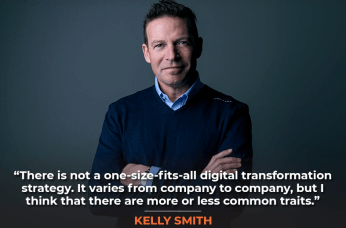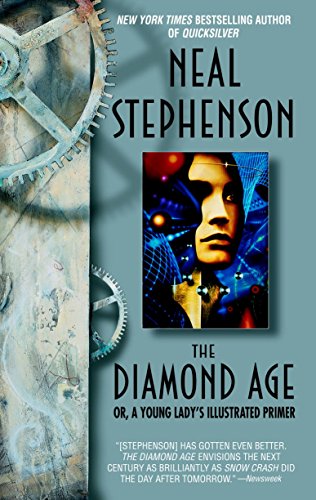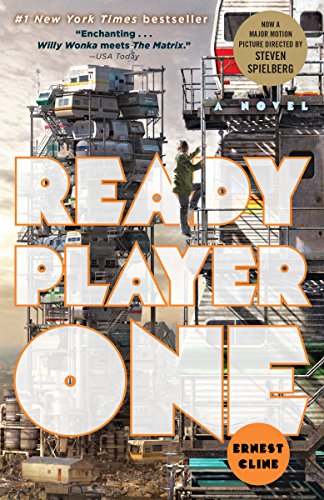What is digital transformation? Why is it important for companies to embrace it? And how can a company pull off a successful digital transformation? These questions may not have been top of mind for you, but as the term “digital transformation” becomes more mainstream in the business world, your need to understand it and implement it increases.
Today, I’m joined by Kelly Smith, the Chief Strategy Officer of Hagerty, the world’s largest insurer of collectible cars and the largest automotive enthusiast membership organization. In this role, he serves as the CIO, CDO and CSO. In addition, IT, Digital, Data, Martech & Security roll up under his leadership.
Kelly oversees all aspects of digital transformation, including team building, customer experience, development, design, and product management. He also brings a unique perspective to executive committees and board rooms due to his broad and deep experience from both the traditional CIO perspective as well as Chief Digital Officer/Chief Experience Officer experience. From this vantage point, he has managed back-of-house IT teams, marketing technology teams and cutting-edge consumer applications.
I really think you’re going to enjoy this episode.
And now, on with the show!

In this Episode
- [00:19] – Stephan introduces his next guest, Kelly Smith, the Chief Strategy Officer of Hagerty, the world’s largest insurer of collectible cars and the largest automotive enthusiast membership organization.
- [02:40] – Stephan wants to hear about the definition of digital transformation since it is a key aspect of Kelly’s role in Hagerty and his career path.
- [04:34] – Kelly differentiates the digital usage of China and the US and shares the importance of having a solid grasp of product concepts, UX and UI concepts, and engineering concepts in digital transformation roles.
- [07:31] – Stephan asks about digital transformation in user experience, customer experience, user interface design, marketing and sales. He further asks where it lives in an organization and who is in charge.
- [10:23] – Kelly shares his perspective on becoming an ideal candidate for a digital transformation role
- [16:37] – Stephan remembers a quote that says that there are two kinds of businesses that will exist at the end of this current decade—businesses that are using AI at their core and businesses that are out of business.
- [19:26] – Kelly and Stephan share their thoughts about gleaning actionable insights from data.
- [26:17] – Stephan says that most successful people know how to make curiosity infectious, and the best marketers are outstanding storytellers.
- [27:49] – Stephan and Kelly talk about the importance of recognizing patterns and utilizing them.
- [31:11] – Kelly raised the question about the value of intuition and the role it should play.
- [36:31] – Kelly emphasizes the power of listening to your intuition in product management and digital leadership.
- [39:58] – Visit Kelly Smith’s website to know more about him and learn about digital transformations.
Transcript
Kelly, it’s so great to have you on the show.
Thank you for having me, my friend. We were just talking before the opening how long it’s been since we connected. It’s quite a few years, I think, so glad to be here.
Yes, and what I didn’t include in my intro about you is the fact that you are on my board for some years. That’s probably 15, 20 years ago now, something like that. A really long time. I guess 15, maybe.
Unbelievable. You look exactly the same.
Thank you.
You have a podcast on lifestyle choices, I suspect.
I do have an entire podcast show all about lifestyle choices, lifestyle design, biohacking, and all that, yes. And part of it is getting, I wouldn’t say lucky, I’d say more fortunate with good genes, but also making smart choices about things relating to what you put in your body, supplementation, even stem cell therapy, meditation, and neurofeedback. All of this helps keep you young inside and outside.
Companies can sometimes struggle because they have to innovate into the unknown.
Anyways, let’s talk about marketing. I would love to hear your definition of digital transformation because that is such a key aspect of your role at Hagerty and a key aspect of your career path, your trajectory. I’d love to understand more about what that means for you and what you think the misconceptions and misunderstandings are about digital transformation, the concept, and the definition from others.
I will start by telling you that I fell into this area of focus a little bit by accident. In fact, I’m not even really sure I heard the term when I was in the middle of it. That really started with my time at Starbucks. I was asked to help build a digital team for Starbucks in China. They were just exploding at that time, even now. We were opening one new store every 15 hours.
In the process of basically trying to bring new customer-facing innovations to market in China, those were things like digital payments, replacing plastic loyalty cards with an ability to earn loyalty points from your phone, and so on. That was really when it started to become clear to me that companies can sometimes struggle because you have to innovate your way into the unknown in many, many respects.
I think what I’ll say is that all too often, traditional IT teams maybe just don’t have that mindset necessarily. That’s where it really started. It’s really so much that it’s about people and culture, but yeah, sure, we’ll talk more about it. That’s how this whole thing started.
Let’s differentiate what it’s like in China in terms of the digital usage and let’s say the United States because everyone is on the same platform in China and it’s WeChat. It’s used for payments, it’s used for messaging and pretty much most aspects of life can be conducted through WeChat. You don’t have that kind of pervasive singular system here in the States. I’m curious to hear how you would apply what you learned in China, in the US where in some ways, we’re quite backward.
There is not a one-size-fits-all digital transformation strategy. It varies from company to company, but I think that there are more or less common traits. Share on XI know that might ruffle some feathers when they hear that. They’re like, no, China’s not leading. In certain areas, they are absolutely leading. For example, certain aspects of AI, they are the world leader. There’s just no comparison. Facial recognition, for example. Facial recognition AI, there’s no one even close to them.
Very true. I think you’re absolutely right. Just to give an example, at that time, we were really proud of our ability to offer mobile order and pay or order advance in the US. But in China, what was interesting about that was they made it pretty clear to us that that wasn’t going to be good enough. People just want it brought to their desk.
I remember thinking, oh, well, that actually seems even better because that’s what people do. You have lunch brought to you. There isn’t really much of a market in China for ordering to the retail store ahead of getting there. That’s definitely, I think, a good example.

What I took away, I think, was just being flexible with specific concepts, but being pretty focused though on the overall strategy. The tactics can certainly change and the tactics there, of course, were that, yeah, we built them a native mobile app and that was useful, but it was also very important for us to get really proficient building apps on WeChat. There was a tremendous appetite for it.
You certainly appreciate the differences in other development platforms like that. You appreciate the differences in UX and UI. Customer expectations from scenario to scenario can be very different, even for the same company and the same basic offerings.
The key thing, I think, I would say is that it’s really helpful in these digital transformation roles to just have a really solid grasp of product concepts, UX and UI concepts, and engineering concepts broadly and don’t really be in love with specific technologies because that’s not the goal if you have to serve global markets. I learned a lot though. I’ll tell you, it moves fast over there.
Yeah, I bet. Where does digital transformation fit in terms of user experience, customer experience, user interface design, loyalty, marketing, sales? Where does digital transformation live in an organization? Who’s in charge of it? Because a lot of companies don’t have a Chief Digital Officer, a Chief Strategy Officer, or a very specific role to oversee this digital transformation initiative that they may be embarking upon or needing. Where does it live? How do these different departments, sometimes silos that don’t speak to each other very well, interact to make this an effective initiative?
I think the first thing I would say is that I’m not convinced that every company needs this kind of role. I think it depends on a case-by-case scenario. Largely, I think that has to do with the CEO what are their capabilities, understandings, and so forth. The other thing I would say is that there is not a one-size-fits-all digital transformation strategy. It varies from company to company, but I do think that there are more or less common traits.
Customer expectations from scenario to scenario can be very different, even for the same company and the same basic offerings.
Just backing up for a second why the role and why is it important for those boards and leadership teams who choose to take this kind of pallet on board. Fundamentally, you can think of it like this. If everybody is reading the same information about success stories and even failure stories, we have, on the one hand, Blockbuster and RIM, BlackBerry, the makers of BlackBerry. You could say even Motorola actually, and then more traditional stories like Sears, Macy’s, Kmart, and others. But then, over here, on the other hand, you’ve got stories like Starbucks, Domino’s, Target, and Walmart.
You definitely see digital transformation taking place. You can observe that either people are transforming themselves right out of business or they are transforming themselves in new ways as a company so that they can be more competitive against whoever they’re competing with. Most oftentimes, it seems like it’s Amazon.
It’s a curious thing though, isn’t it? There’s freely available information on all of these boards, so what’s going on? What’s going on that could result in two dramatically different outcomes? Lying in that answer is why this kind of role exists. A lot of it is definitely about innovation, process, and new product experiences. But sitting a layer above that, it’s really about culture, people, and mindset, I would say. That’s the why at a really high level.
What makes you an ideal candidate for a digital transformation role because of your mindset that others don’t have? I have an idea because we know each other from way back when, but why don’t you answer that from your perspective?
The people that I really follow and look up to in these kinds of roles tend to be, I guess, polymaths, in a way, which is to say that they’re good business people. They’re good marketers, they’re good technical minds, and they’re good product people. The reason that’s important is because you need to help the organization figure out what is its own particular unique landscape and what really needs addressing.
Not having clear transformation goals is a big part of the problem.
From there, you can help the organization start to frame clear transformation goals. Not having clear transformation goals is a big part of the problem. You do need to be fairly strategic, I think, to do this role. It’s not just about making neat mobile apps, chatbots, or whatever it is that people sometimes said. It’s really not that at all.
It’s really about helping the leadership team understand the ways in which digital disruption can be helpful and hurtful to their particular situation and then helping the organization understand how to course correct and make strategy adjustments investments, and then everything falls from that. Certainly, some of those really interesting products come out the other side of that if you’re doing it right. There’s no doubt about that, but that happens way down the line. I’m curious what you would have said.
I think of you as a Renaissance man, so polymath is another way of saying that. I consider you very agile, nimble, and kind of a chameleon in a way where you can adapt to scenarios that are quite different. Like being in China where it’s like a different planet. Off the top of my head, that’s what I would say.
Before we came online here today, we were talking a little bit about why some of these roles tend to be so short-lived. I think the answer to that is probably decently long, but a short version is that in many ways, this kind of role is a little bit like a consulting role. You certainly can have longer tenures wherein you’re still doing the consulting role, but then you start moving into that execution phase where you start building up new teams and developing new muscle, new capabilities, new product workstreams, and so on and so forth.
I suppose the most significant value though probably comes in that consultation phase upfront, which is, all right, what does digital transformation going to mean for us? Then once people get it, to be honest with you, one version of success is that the CIO, the CMO, the CEO, and others start galvanizing around that strategy and around that vision and up-leveling themselves, and then they start up-level their team. They just start marching down the tracks. That’s great. And if the Chief Digital Officer has a short tenure in that case and it’s working, that’s a perfectly fine outcome from my perspective.
A good place for businesses to start digital transformation is to be really good stewards of data and use data creatively. Share on XYeah, but the thing is, it’s really weird to me that even the chief marketing officer has a short tenure, typically. It’s surprising when you see a five or seven-year-long stint for a CMO, whereas 9 or 12 months doesn’t seem that unusual. It’s just kind of bizarre to me.
That’s a really good point. I suspect that one of the reasons that’s happening is that there’s a little bit of a shake-up around that role right now. Again, I think it has everything to do with the implications of digital, but not every marketer necessarily has the digital chops to really weigh in and help in all of those other areas like, how are we going to drive more engagement around our media properties, how we’re going to drive more downloads of our app, or how are we going to drive more views of our content?
That’s where it all starts to fall apart for some CMOs is that they just are still in some of those traditional sides of the craft and the brand side of the craft, which is still very important. It’s an interesting thought, right? Will there be any non-technical CMOs in the Fortune 100 in 10 years?

I doubt that. I just don’t see them staying in the Fortune 100 if that’s the case.
It’s an interesting thought exercise, but I think that’s what’s going on there.
If a CMO has not read Snow Crash or The Diamond Age, they’re not forward-thinking enough, in my opinion, or Ready Player One. Just thinking in terms of where the puck will be and not just where the puck is currently, to use the Wayne Gretzky quote, it just seems like there’s not a place for the Luddite in the future of a Fortune 100 company, I would guess.
I think that’s exactly right. Certainly, you could probably take it further if you wanted to. You could say, okay, well, in a new era, is it reasonable to say that the expectation of your C-level executive teams should be that they are active drivers of the innovation agenda and active creators of the innovation agenda? I would say, yes. Yes for the COO, yes for the CMO, yes for the CIO.
The cynical types might say, yeah, those Chief Digital Officer roles, those are just like kindling to start the fire. That’s fine. If that works for you, that’s great. The reason I say that is because other companies that literally go out of business, they’re struggling with culture change.
I love this quote. I heard it from Peter Diamandis at Abundance 360, which is his event a couple of years ago. He said there are two kinds of businesses that will exist at the end of this current decade—businesses that are using AI at their core and businesses that are out of business.
Other companies that go out of business are struggling with culture change.
I think I like the point of that. I think that a good place for businesses to start is to just be really, really, really good stewards of data and use data creatively. If some of that is being done in more traditional ways that are not passing through machine learning algorithms, that’s fine, but it’s a good place to start. It’s just that most people really are not doing that. I would definitely start there.
For this reason, by the way, when you’re trying to create a digital transformation product strategy, you’re not out there saying, hey, we need an enterprise data hub because it sounds cool. You’re not out there saying, we should get Snowflake a big pile of money because that’s what everybody else is doing. You’re doing it because odds are good that you don’t have the foundation to leverage data to the max in the building.
A good example, one of my former employers, MGM Resorts, better known for owning a lot of those big casinos and properties in Vegas, they don’t really have a good handle on who some of their frequent big spenders are, believe it or not.
I don’t mean the whales who come in and gamble a lot because they do have a better view of that, but I mean the people like you who are going to go and there’s a clear pattern of you staying in the nicer rooms, clear pattern of you being one of those lucky guys who rented the cabana by the pool, people who opted for the spa, and then people who dinner that night, went to one of the top three or four restaurants out there. They have a very hard time putting all that together. Call that a technology problem if you want, but that’s the issue. We’re not even too AI yet.
We’re not even too into AI yet.
That wouldn’t be a problem in China, I would imagine. The facial recognition and all that would take care of that right away.
Yeah, I think that’s right. For all of us, the technology capability is really there. It’s just, do you have the people at the helm to create the strategies and then to create the constructs that you need to maximize AI capability? I think you wouldn’t be surprised to know, not every CIO has that capability. A lot of CIOs out there have never logged into an AWS account or don’t have one.
Good point. That brings me to another point that it’s not about the data, it’s about gleaning actionable insights from the data. You can have a huge data warehouse and all it does is collect data. I’m guilty of that. In my personal life, I pull in all of my data from all my transactions into Quicken and I do absolutely nothing with it.
My company’s handled through my bookkeeper, accountant, and all that. They use QuickBooks and all that’s handled. But my personal finances, all I do is spend the two minutes every month or two to import the data from all the banks, the credit card companies, and all that into Quicken. I do absolutely nothing with it.

I can’t remember the last time I tried to come up with a personal budget. It’s been decades. That’s not how I’m wired. That’s a personal example of collecting data for absolutely no use. Sure, our listeners can relate to that. How do you glean actionable insights out of this stuff?
That is such a really great, easy-to-understand example because so many companies have these investments in whatever it may be, in technology, what have you. When boards aren’t happy with the outcome, fortunately, I think the reasons are actually fairly simple. Most of the time, I would say, it’s probably because the leadership team didn’t specify the outcomes in the first place.
We all, I think, underestimate how easy it is to go about our day and get confused around things happening versus we’re achieving our outcomes. It feels eerily similar because you feel busy. Things are happening, people are doing stuff, you’re going to meetings, stuff’s getting built, you’re shipping things, and so forth. But a lot of times, what these conversations are about and what these roles are about is just simply putting more critical thought into saying, what are the goals?
Is everybody aligned, by the way? Are we all aligned when we say digital transformation? We each got in separate rooms and let’s say we were questioned, would we all say the same thing? Most of the time, the answer is no.
Are we all aligned when we say digital transformation?
When we talk about why are we going to make a native mobile app, most of the time people will get answers like, well, because mobile is important. More people use mobile than use desktops. But the product mindset says, okay, here’s my contribution. That answer is not good enough.
That’s the lazy answer because the percentage of apps on mobile phones that are actually used, that’s tiny. It’s just crazy. Most of the apps on my phone never see the light of day. They’re not even installed anymore. They’re just in the cloud and then I have to wait 30 seconds until they’re redownloaded again in order to use it because that’s how infrequently I use those apps.
I probably use maybe four or five apps, that’s it, and I’m not atypical. If you think that you’re creating a mobile app for the purpose of serving your audience because they’re on mobile phones, that’s like saying, well, I’m going to send this junk mail because they have mailboxes. I know that they like getting mail in their mailboxes. There are important things that arrive in their mailboxes, that’s why I’m sending them junk mail. It makes no sense.
That’s right, and it is a really, really good example. The contribution to the equation is really to just take it to that next level and then try to instill that habit in coworkers. By that, I mean, solve for need, write it down, and have a hypothesis for why you think that’s a need. Even then, the next part of this is, assume you’re not right a lot of the time. In fact, assume you’re not right all the time.
If you’re going to solve for need, how do you know it’s a need and how do you know the thing you’re making is going to solve it? The next muscle to build is to say, ‘all right, now that we’re all aligned with that, we have another task, which is to minimize time to value.’ Very simple.
Minimize time to value.
People say, well, what does that mean? It’s like, well, you’ve heard about things called Mbps and everything else. You know why the world invented those acronyms? Because they’re trying to tell you, minimize time to value. Figure out that the problem you’re solving is really the problem and figure out that the thing you’re building is really the thing that’s going to fix the problem.
In the case of mobile, you would start with an outcome that was pretty clearly stated that said, hey, I think we’ll sell more cabana reservations if we redesigned the cabana page, readdress the UX, and made it responsive. All right, well, that sounds like a perfectly great theory. It sounds like a good one.
Let’s figure out how we test that, let’s figure out what the cost is going to be to test that, and let’s start to make some milestones. All those sound really, really simple. To be honest with you, in retrospect, it actually is. It’s just a way of thinking.
I was in a meeting the other day where our colleagues on the business side were saying to us on the product side, they were saying, we’ve been asking to have this fixed for a year and it’s still not fixed. I just don’t understand why are we not making more progress. I said, what is the thing to be fixed? And people had forgotten. Is it one thing? Is it three things? Do we know it’s a problem because we validate the problem?
That’s not a criticism at all. That’s the product mindset contribution to bring to companies of the modern age. Invoke critical thinking, and go two, three, four, five levels down and really unpack things like crazy. If you want to talk about infusing every conversation in the building with increased levels of curiosity, that’s good too. In fact, you can’t take it out of this whole conversation. I’ll bet you know a lot of successful people because of what you do.
Figure out that the problem you're solving is really the problem, and figure out that the thing you're building is really the thing that will fix the problem. Share on XWouldn’t you say that one of the characteristics of those people is that they’re just excessively curious compared to regular people?
I would. I would also say that the most successful people know how to make that curiosity infectious. They know how to invoke that curiosity gap between what you’re producing, what you’re delivering, and what is going on in the consumer or customer’s mind so that you’re not giving away the punchline too quickly.
Yeah, absolutely. I don’t know if you meant to say this, but tell me if another way to say the same thing is that they tend to be able to bring people along because, for lack of a better phrase, they’re good storytellers.
Yeah. And the best kind of marketers are the best kind of storytellers and ones who can use data to assist them in the process. It’s data-driven storytelling. Instead of just reporting on the numbers, how about you tell stories that mean something to the person hearing or receiving that story?

Yeah, that’s a great point. I think to build on that when we talk about bringing a concept of OKRs, objectives, and key results into a digital transformation conversation, it’s just another way of saying what you just said, which is to think about the problem we’re trying to solve, then figure out if the data supports the hypothesis, and then figure out if we did a good job, how would we know? Literally, how am I supposed to measure it? It’s not rocket science in a way and that’s the good thing.
It’s not, but it also requires a special skill set of, I would say, pattern recognition and even pattern utilization. It’s not enough to just recognize the patterns. For example, you might see that in analyzing the data, Italian wine and pasta correlate in terms of the purchase behavior of the consumer. They’ll buy some Italian wine and buy some pasta in the same shopping session. But then, the non-intuitive example might be white wine and bread.
They didn’t feel that that was necessarily a trend, but then the data supports that or shows that. They spot the pattern and then they have to utilize it. That could be applied through just a carte blanche approach of everybody who is in a white wine section sees an offer for bread or it could be on a personalization type of approach where if the person individually has a purchase behavior or at least just a browsing behavior, in the white wine department, they’re also being offered some bread.
I’m curious, actually, on that point. Where do you sit on the side of is personalization the right approach for the future so everybody gets a unique experience, or is it just applying a general terms like you gave the cabana as an example a little bit ago? That would be something that you could just apply to the webpage across the board and not personalize it.
We’ve got to earn the right to play with the fun stuff.
When working on these digital transformation projects, I like to say that we’ve got to earn the right to play with the fun stuff. By that I mean, the AI example we talked about earlier, I suppose, is kind of example which is to say, yeah, AI is cool. I agree with what you said about it being the future, but I also want to see that we understand how to think about leveraging data in more basic ways so that we can work our way there.
You got to walk before you can run.
You got to walk before you can run. That’s exactly right. I’ll tell you a funny story. People who know me well know that I obsess over my PowerPoint presentations. Speaking of walk before you run, people that know me well know that I tend to obsess over presentation. When I do have to give a presentation, if it’s in the form of a slide deck, I usually put a decent amount of time into that deck to make it compelling.
Most of the time, I think it’s a little bit shocking to people. But the reason is because I like to say, if you can’t make a good PowerPoint, you’re not going to make a great mobile app. I think that’s true.
I’ve got a question for you because I know your background. I totally understand how you’ve built a career on evaluating data, making sense of data, and then making a decision. I do think that knowing when to pivot and when to hold fast is a classic challenge for all of us doing some of the work that we do.
You got to walk before you can run.
For me, it raises the question of the value of intuition and what role intuition should play in your toolkit. Is it your view that intuition is overhyped and actually, it’s really just about data and experience of pattern recognition, or do you think it’s still a thing? Does it play into your toolkit?
Wow, what a cool question. If I had gotten this question a couple of years ago, I would have given just a straight answer that you would expect to hear. I had a big spiritual awakening a year ago. My answer is completely different now than it would have been prior to that.
Intuition is teaching from within. It is your higher self, your spiritual support team, angels, et cetera whispering into your consciousness. It’s not actually your own thoughts. They’re using your thoughts as a way to convey the information to you.
You can receive information that you couldn’t possibly know. Which stocks or cryptocurrencies are going to go sky high, for example? You could receive that as an intuition and you choose to act on that. You have to use discernment. There are a lot of caveats here.
This probably sounds—for somebody who’s more skeptical—like nonsense, but we all have these intuitive insights that we receive that end up changing our lives. For example, I got one when I was still agnostic—I didn’t really believe in anything—that I should pick up and move to New Zealand, which sounded to all my friends and family like it’s just a lark really.
For all of us, the technology capability is there. It's just, do you have the people at the helm to create the strategies and then create the constructs that you need to maximize AI capability? Share on XWhat are you thinking? Everybody’s going to Silicon Valley to build their business. You’re in Madison, Wisconsin. You need to move to the Bay Area, not to New Zealand. Have you ever even been there before? I hadn’t, I just had this intuition that I should pick up and move, so I applied for permanent residency. I got in.
Bear in mind, I still had not ever stepped foot in the country, but I knew without a shadow of a doubt that we were going to go. I had to convince my wife at the time that this was a sound decision to make, but it was magical. Seven and a half years there of just magic. That was meant for me. That was meant for my life.
It was through intuition that I got there. It wasn’t because of data. I had no data. I knew nothing about New Zealand. I had no understanding of how different New Zealand and Australia were from each other. No clue. I’m probably sounding pretty woo-woo here, but I think this needs, from my standpoint, an authentic answer rather than the politically correct or no-nonsense answer.
I love the answer because again, I’ve known you for quite a while. Way back in the day, you were doing work with SEO and everything else. Of course, so much of that is just about data. Just evaluating the data, you’re making decisions, and so on and so forth. In those days, given what you were doing, you weren’t making a lot of those work decisions on intuition, I suspect.

I was still getting guidance, but I was not paying as much attention to it. When you go against your intuition, then you end up in all kinds of trouble, by the way. You get this intuition that you should not go to work today. You shouldn’t drive to the office or whatever. You do it anyway and then you get into a car crash. I should have listened to my gut, but how did your gut know? It wasn’t your gut.
It wasn’t some neurons in your gut. Your gut actually does have neurons and so does your heart, but that’s not how you knew. It was because, on the other side of the veil, they knew. They’re trying to steer you in the right direction and you didn’t listen.
I’ve gone against my intuition many times. Not anymore. I know better. But yeah, just trust your intuition and follow it through. If I think of somebody out of the blue that it’s been years since I’ve been in contact with that person, maybe it was a past client and they changed roles multiple times, didn’t keep in touch, I get this intuition that I should reach out and say hello. Lo and behold, they need SEO services, and then they become a client shortly thereafter. That wasn’t random, that’s intuition.
There you go, folks. I think it’s a powerful thing because even in the context of the topic we’re talking about earlier, you’re making big bets and you’re making big recommendations to investors, board members, or CEOs. We should go invest in this. Before things happen, before the fruit of the investment pays off, you’re kind of relying on something and hopefully, you have some data, but to your point and I agree, it’s got to be more than just data.
The power of intuition in product management and digital leadership.
I think it’s an important conversation we don’t talk a lot about in this business, the power of intuition in product management and digital leadership. Again, it’s something to listen for before you go in and recommend those really, really big bets.
Yeah, and it’s not blind faith. Somebody who’s skeptical might say, dismiss it as or you just don’t have data so you’re making something up that’s based on what you want to have happened. If you’re truly connected to your intuition, then it’s faith that isn’t blind. It’s faith that is plugged into the magic, to the fabric of creation, to the other side of the veil that those veils are thinning.
This is an interesting bit of trivia I learned last year. The term apocalypse doesn’t mean the end of the world. It’s from the Greek Apocalipsis, which means thinning of the veils. The veils are thinning. More and more people are having without a doubt signs that there’s something more than just this physical reality to their existence. It’s really, really cool.
You’re seeing TV shows that have that premise more and more, documentaries included, like the Surviving Death show on Netflix or Manifest, which is a fictional show, but clearly, over at Netflix, they had some experts weighing in on how this actually works so that it is legit sounding and not just completely fanciful. It’s an interesting time to live in.
This conversation feels like a close cousin of another favorite topic of mine, which is quantum mechanics. That’s for another day, I think.
I’m a big fan of quantum. I actually studied it in graduate school. I was studying for a degree. I’m a Ph.D. in biochemistry and I took some quantum mechanics courses. But yeah, definitely closely related. I don’t know if you follow Dr. Joe Dispenza. I love his work, his writings, his teachings, his workshops, and stuff.
We underestimate how easy it is to go about our day and get confused about things happening versus achieving our outcomes. Share on XI’ll give him a read, for sure.
Also, Dr. Amit Goswami. He was in the documentary, What the Bleep Do We Know!? He’s a quantum physicist and he’s written about the God particle and stuff. He’s really really cool. He’s been on my other podcast on Get Yourself Optimized. Episode 151.
Interesting guest. Hey, I sure am glad. Speaking of reaching out, you did just that to me and I’m sure glad to reconnect with you again.
Yeah, likewise. If our listeners want to follow you, learn from you, where do they go?
Sure. My website is just my name, kellysmith.com. I’m @curiousoffice on Twitter. Speaking of curiosity being important, there are a few good places, and then you can go from there.
Awesome. Thank you, Kelly. Thank you, listeners. I’m your host, Stephan Spencer, signing off. Have a great rest of your week.
Important Links
Connect with Kelly Smith
Apps and Tools
Books
Businesses/Organizations
Films
People
Previous Get Yourself Optimized Episode
Your Checklist of Actions to Take











About Kelly Smith
 Mr. Smith oversees all aspects of digital transformation to include team building, customer experience, development, design and product management. Smith brings a unique perspective to executive committees and board rooms due to his broad and deep experience from both the traditional CIO perspective as well as Chief Digital Officer/Chief Experience Officer experience. From this vantage point, he has managed back-of-house IT teams, marketing technology teams and cutting-edge consumer applications.
Mr. Smith oversees all aspects of digital transformation to include team building, customer experience, development, design and product management. Smith brings a unique perspective to executive committees and board rooms due to his broad and deep experience from both the traditional CIO perspective as well as Chief Digital Officer/Chief Experience Officer experience. From this vantage point, he has managed back-of-house IT teams, marketing technology teams and cutting-edge consumer applications.
Mr. Smith is currently the Chief Strategy Officer of Hagerty, the world’s largest insurer of collectible cars and the largest automotive enthusiast membership organization. In this role, he serves as the CIO, CDO and CSO. IT, Digital, Data, Martech & Security roll up under his leadership.







Leave a Reply